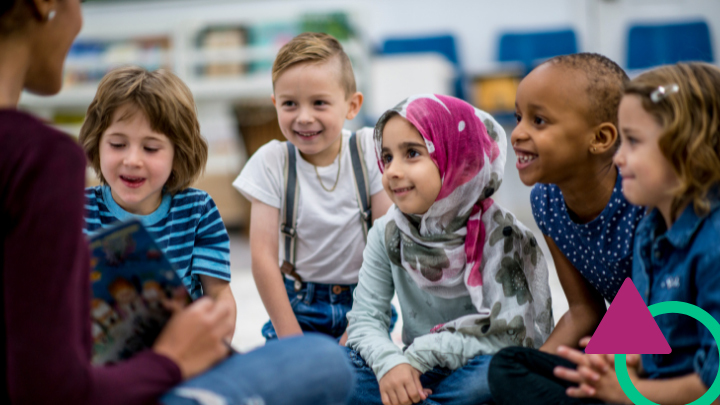In a traditional setting, the end of the school year is filled with lots of field trips, celebrations, and reflections. Teachers keep students engaged through hands-on learning experiences, fun parties, and even the occasional movie. While this looks different in distance learning, it’s important for the last few weeks of school to continue to be engaging and celebratory for students. It’s also an important time for teachers to seek feedback from their classes. Here are 4 steps to ensure powerful, student-centered learning continues through the end of the year:
1. Make learning as engaging as possible
It’s natural for students to start to become less engaged in school work at this time of year. Now that the novelty of distance learning has worn off, it is our responsibility to re-engage students through the end of year. For example:
- Hosting games for students that are not just fun, but also designed to demonstrate mastery of material. This can be done successfully online using tools like Kahoot, Quizziz, Skribbl, or Jackbox.
- Watching a movie. As in the classroom, teachers should choose movies that are thematically tied to course material, like engaging documentaries, historical films, or adaptations of books. (And yes – even STEM movies!) Students can choose a movie from your list of options, watch synchronously through your shared screen, or watch on their own time and post their reaction to FlipGrid.
- Modifying content to be as student-led and social as possible. Let students choose their own articles or books to read, research a topic of their choice, or pursue a passion project – for example, using the strategy called Genius Hour. Use the breakout room feature to allow students with similar topics to collaborate with their peers.
- Creating an online field trip for students. Many zoos and museums have online exhibits for students to visit. Doing an online visit may even afford students more autonomy than an in-person school visit.
2. Create opportunities for students to reflect on their growth and celebrate their learning
Research demonstrates that reflection and publicly showcasing work is a powerful tool for learning. Try the following ideas to help students reflect and celebrate:
- Having students write a letter or record a video about their year. This could be a letter to you, a letter to their teacher next year, or a letter to a student next year. Students can reflect on their proudest moments (this strategy is only available with a BetterLesson account), what kind of things help them learn, their experience with distance learning, and their goals for next year. Students can turn their letters into videos using Loom or FlipGrid.
- Creating personalized digital portfolios using Google Sites. Students can post work on their site from the year, reflect on their growth, and create goals for next year. Students can continue to add to these portfolios in the year to come.
- Creating an online “museum” or public display of student work. Students can choose the piece(s) of work that best show their growth or demonstrate what they are most proud of from the year. They can then create an “artist’s statement” or a short video to accompany the piece that describes their work. Google Slides offers online virtual museum templates to explore, or all work and videos can be posted on a Google Site, along with a Google form for students to receive comments and feedback from their peers, school staff, or families.
3. Ask for feedback
Shifting to distance learning was new for all of us. We all tried new instructional methods and explored new ways to connect with students. Feedback can help us prepare to possibly return to a distance learning setting next year or to think about how our in-person instruction could be more tech-integrated and personalized next school year. Try:
- Creating a Google form, Survey Monkey, or Mentimeter for students to complete. Ask students questions about what helped their learning, as well as what was challenging for them in a distance learning setting. Make sure to share back what you learned with students, so that they know their feedback was heard.
- Hosting small group feedback sessions. Try a Fishbowl discussion in a synchronous video session. In the Fishbowl, students participate in and observe each other having a discussion; this allows students to have both perspectives and increases their ability to reflect.
- Soliciting multimedia feedback. There are various ways to use the “board” features of Padlet to provide multiple options for students to express themselves, or encourage them to create a video message through FlipGrid.
4. Send students into summer with resources and learning activities
For most students, this summer is going to look very different from previous summers. With many camps canceled and potential summer jobs no longer available, there may be a void in many of our students’ summers. You can support them by:
- Sharing resources. Your district’s distribution sites may change in the summer months. Make sure students and their families know where to find resources and who to reach out to over the summer. One way to do this is through creating a Family Partnership Plan.
- Suggesting engaging work for students to complete over the summer. Start with students’ interests and passions, and recommend either virtual resources they can access on their own – from Duolingo for language study to Khan Academy to all of the ones you’ve accessed in class – as well as off-line activities like a book-reading challenge or science mystery to solve. Connecting the project to next year’s themes and standards will also help students fight the summer slide.
- Staying connected. Don’t burn yourself out over the summer – teachers need a break too! But if you find you have capacity, host virtual meet-ups or stay in touch with students 1:1. Many students will benefit from knowing that they can continue to see both you and their peers in July. Doing so can help to ensure their emotional wellbeing and that they have the resources they need all summer long.
Although this was a school year unlike any that we have experienced before, there is no doubt that our students grew and learned a lot. We must provide digital spaces for this important reflection and celebration of their learning to occur, while also creating an engaging learning environment for all students. It’s also an important time for us as educators to seek feedback and reflect on our own practice. In doing so, hopefully we will all feel positive as we wrap up the year.








